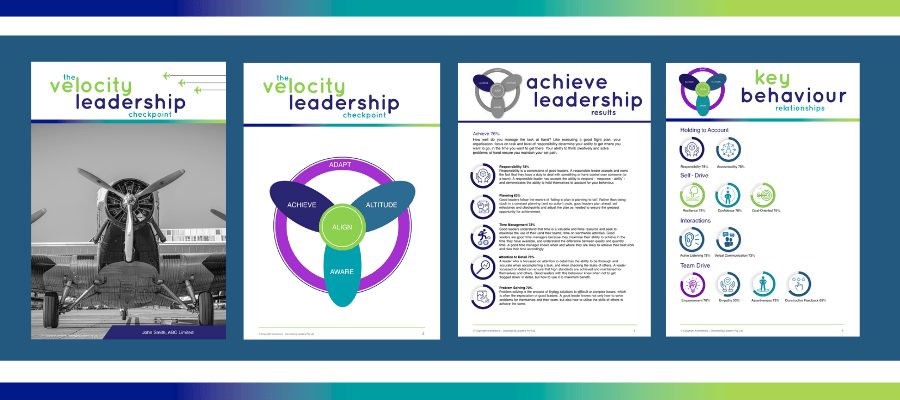As the Christmas / New Year season approaches, what better way to unwind and prepare for the exciting prospects of 2024 than by sitting down with a great leadership and teamwork read? If you get a chance to spend some time on your own (or if you need an escape!), consider one of these seven essential leadership reads. These books aren’t just enjoyable (and some of my favourites); they are your ticket to emerge as a more insightful small business leader come the New Year and the start of 2024.
1. “The 5 Dysfunctions of a Team” by Patrick Lencioni
Patrick Lencioni’s “The 5 Dysfunctions of a Team” is a thought-provoking holiday read for leaders – and is probably my personal favourite leadership and team book. This book is at the top of the list, not only because it is the easiest read of the list due to its conversational style, the insights are easily adopted and practical in nature. Lencioni’s insight, “Not finance. Not strategy. Not technology. It is teamwork that remains the ultimate competitive advantage, both because it is so powerful and so rare,” will inspire you to address any team challenges and set the stage for a cohesive and high-performing 2024.
If you liked this book, you could also consider:
Book: “Leadership and Self-Deception” by The Arbinger Institute
-
Why: Similar to Lencioni’s emphasis on team dynamics, this book explores how self-deception can hinder teamwork and provides insights into fostering a culture of accountability and collaboration.
2. “Leaders Eat Last” by Simon Sinek
Simon Sinek’s “Leaders Eat Last” sets the tone for selfless leadership. Take a moment during the holidays to reflect on the importance of taking care of those you lead. Sinek’s wisdom, “Leadership is not about being in charge. It’s about taking care of those in your charge,” will inspire you to foster a culture of trust and collaboration within your team.
If you liked this book, you could also consider:
Book: “Team of Teams” by General Stanley McChrystal
-
Why: Like Sinek’s work, McChrystal discusses the importance of collaboration and adaptability in leadership. He provides insights from his experiences in the military, illustrating how dynamic teamwork is crucial for success.
3. “Dare to Lead” by Brené Brown
Brené Brown’s “Dare to Lead” encourages leaders to embrace vulnerability – one step to developing your authentic leadership style. if you read closely, Brene forces you to really reflect and take a good look at yourself and your leadership, ponder ing the words, “Vulnerability is not winning or losing; it’s having the courage to show up and be seen when we have no control over the outcome.” Embracing vulnerability can set the stage for a more resilient and open workplace and leadership style in the year ahead.
If you liked this book, you could also consider:
Book: “Grit: The Power of Passion and Perseverance” by Angela Duckworth
-
Why: Duckworth’s book complements Brown’s focus on resilience and courage. It delves into the concept of grit, emphasising the role of passion and perseverance in achieving long-term goals.
4. “The 7 Habits of Highly Effective People” by Stephen R. Covey
Stephen R. Covey’s timeless classic, “The 7 Habits of Highly Effective People,” is the perfect companion for reflection during the holidays. Consider his enduring advice, “The key is not to prioritise what’s on your schedule, but to schedule your priorities,” as you prepare to enter 2024 with a renewed focus on personal and professional effectiveness. What was useful and powerful in the 1980’s can have the same impact on your task, time management and strategic thinking in 2024.
If you liked this book, you could also consider:
Book: “Mindset: The New Psychology of Success” by Carol S. Dweck
-
Why: Dweck discussion on fixed vs. growth mindsets aligns with Covey’s emphasis on personal development. Both books inspire a mindset shift that helps build for lasting leadership success.
5. “Start with Why” by Simon Sinek
The second of my Simon Sinek recommendations, “Start with Why” invites you to explore the core of your purpose. As you enjoy some downtime during the holidays, ponder Sinek’s words, “People don’t buy what you do; they buy why you do it.” So what is your ‘why’? Sounds simple, and takes much more effort than you would expect to get to the core of your why. This book will help you set the stage for a purpose-driven and inspiring leadership approach in the coming year.
If you liked this book, you could also consider:
Book: “The Infinite Game” by Simon Sinek
-
Why: Because is there enough Simon Sinek? ???? Simon’s follow-up book expands on the concept of purpose in leadership, exploring how adopting an infinite mindset can drive organisations towards long-term success.
6. “Radical Candor” by Kim Scott
Kim Scott’s “Radical Candor” offers a refreshing perspective on communication. While sipping your favorite holiday beverage, consider Scott’s advice to “Care personally, challenge directly.” I would read the whole book before you decide to challenge your in-laws about what they do / don’t do on Christmas Day (and perhaps avoid until after News Years if you have consumed enough to make you brave but too much to make you articulate ????) The approach in the book can pave the way for clearer and more honest communication within your team, fostering a culture of continuous improvement.
If you liked this book, you could also consider:
Book: “Crucial Conversations: Tools for Talking When Stakes Are High” by Kerry Patterson, Joseph Grenny, Ron McMillan, and Al Switzler
-
Why: Both books focus on effective communication in high-stakes situations, offering practical tools to navigate challenging conversations with empathy and candor, and align very closely to the IDRIFT model we use in Developing Leaders as the basis of difficult conversations.
7. “Atomic Habits” by James Clear
James Clear’s “Atomic Habits” is the perfect book to set the tone for positive change in the New Year. As you contemplate your goals for 2024, remember Clear’s perspective, “You do not rise to the level of your goals. You fall to the level of your systems.” This book provides actionable insights to shape positive habits within your team and yourself.
If you liked this book, you could also consider:
Book: “The Power of Habit: Why We Do What We Do in Life and Business” by Charles Duhigg
-
Why: Duhigg’s exploration of habits complements Clear’s work, providing a deeper understanding of how habits shape individual and organisational behaviours.
These seven books aren’t just holiday reads; they are your toolkit for leadership illumination in the coming year. So kick back, relax, and let the work of these great authors guide you towards a more inspired and effective leadership journey in 2024.
Happy reading and here’s to a fantastic New Year!











